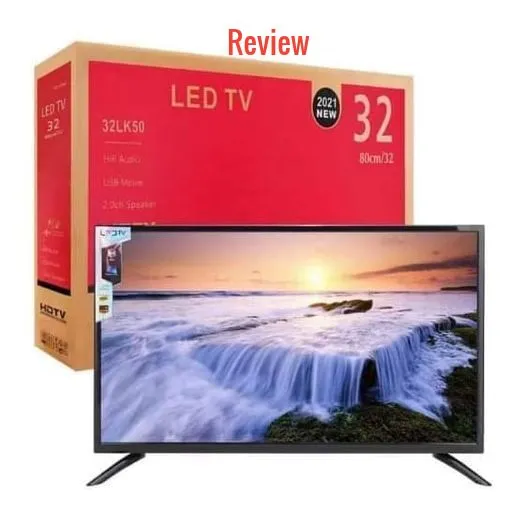When choosing a TV, understanding the power consumption of various models is crucial, especially if you want to manage energy costs and reduce your carbon footprint. This blog post delves into different TV models, their power consumption ratings, and how various factors influence their energy use. We’ll also explore the pros and cons of each model to help you make an informed decision.
1. LED TV
- Power Consumption:
- 32-inch: 30-60 watts
- 42-inch: 50-100 watts
- 55-inch: 60-150 watts
- Pros:
- Energy-efficient, making it cost-effective in the long run.
- Bright display, even in well-lit rooms.
- Slim and lightweight design.
- Cons:
- Limited contrast compared to OLED and QLED TVs.
- Color accuracy may not be as high as in more advanced models.
- LED TVs are a popular choice due to their energy efficiency. With power consumption ranging between 30 to 150 watts depending on screen size, LED TVs are suitable for those looking to save on electricity bills.
2. OLED TV
- Power Consumption:
- 55-inch: 90-120 watts
- 65-inch: 120-180 watts
- Pros:
- Superior picture quality with true blacks and vibrant colors.
- Wide viewing angles with consistent color accuracy.
- Fast refresh rates, ideal for gaming.
- Cons:
- Higher power consumption compared to LED TVs.
- Expensive, with potential for burn-in over time.
- OLED TVs offer excellent picture quality but come at a cost, including higher energy usage, especially in larger models with brightness settings cranked up.
3. QLED TV
- Power Consumption:
- 55-inch: 80-140 watts
- 65-inch: 100-180 watts
- Pros:
- Brighter than OLED, making it ideal for brightly lit rooms.
- Vibrant colors and excellent HDR performance.
- Lower risk of burn-in compared to OLED.
- Cons:
- Still relies on backlighting, so blacks are not as deep as OLED.
- Power consumption can be high, especially in larger models.
- For those who prioritize brightness and color accuracy, QLED TVs are a great choice. However, this comes with a trade-off in power consumption, especially in high brightness settings.
4. Mini-LED TV
- Power Consumption:
- 55-inch: 90-150 watts
- 65-inch: 110-200 watts
- Pros:
- Improved contrast and black levels compared to standard LED TVs.
- More energy-efficient than traditional LED backlighting.
- Less expensive than OLED.
- Cons:
- Not as perfect in black levels as OLED.
- Can be more expensive than standard LED TVs.
- Mini-LED technology offers a middle ground between traditional LED and OLED TVs, with better energy efficiency while still providing impressive contrast.
5. MicroLED TV
- Power Consumption:
- 75-inch: 200-300 watts
- Pros:
- Exceptional picture quality with true blacks and bright highlights.
- No risk of burn-in and a long lifespan.
- Cons:
- Extremely expensive, only available in larger sizes.
- High power consumption, especially in larger screens.
- MicroLED TVs are cutting-edge but come with significant power requirements, particularly in larger sizes, which can impact energy bills.
6. 4K UHD TV
- Power Consumption:
- 55-inch: 80-150 watts
- 65-inch: 100-200 watts
- Pros:
- Ultra-high-definition resolution for sharp, detailed images.
- Available in a wide range of technologies (LED, OLED, QLED).
- Increasing availability of 4K content.
- Cons:
- Higher power consumption compared to Full HD models.
- Requires more data bandwidth for streaming.
- 4K UHD TVs deliver exceptional clarity but can be power-hungry, especially in larger sizes and when using HDR features.
7. 8K UHD TV
- Power Consumption:
- 65-inch: 180-250 watts
- 75-inch: 200-300 watts
- Pros:
- Ultra-high resolution, future-proof for upcoming 8K content.
- Large screen sizes for immersive viewing.
- Cons:
- Very high power consumption.
- Limited 8K content available.
- 8K UHD TVs are the pinnacle of resolution, but their power consumption is considerably higher, which can be a concern for energy-conscious buyers.
Factors Affecting TV Power Consumption
- Screen Size: Larger screens consume more power. A 75-inch TV will use significantly more energy than a 32-inch model, regardless of the technology.
- Brightness Settings: Higher brightness increases power usage. TVs with HDR capabilities may consume more power when displaying bright, colorful content.
- Technology Type: OLEDs consume more power with bright images, while MicroLEDs, despite being energy-efficient, can still be power-hungry due to their large sizes.
- Usage Patterns: Frequent use of high brightness settings or HDR content will result in higher power consumption.
Conclusion
When choosing a TV, it’s essential to consider not just the picture quality and features but also the power consumption. LED TVs are the most energy-efficient, while OLED and MicroLED offer superior picture quality at the cost of higher energy use. Understanding these differences can help you make an informed decision that balances both your viewing experience and energy costs.
Whether you’re looking for an energy-efficient model or the best picture quality, this guide provides the information you need to choose the right TV for your home.

